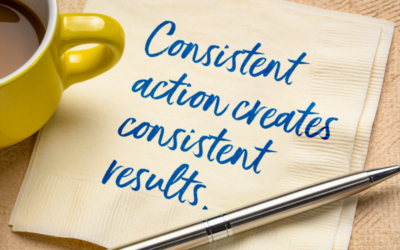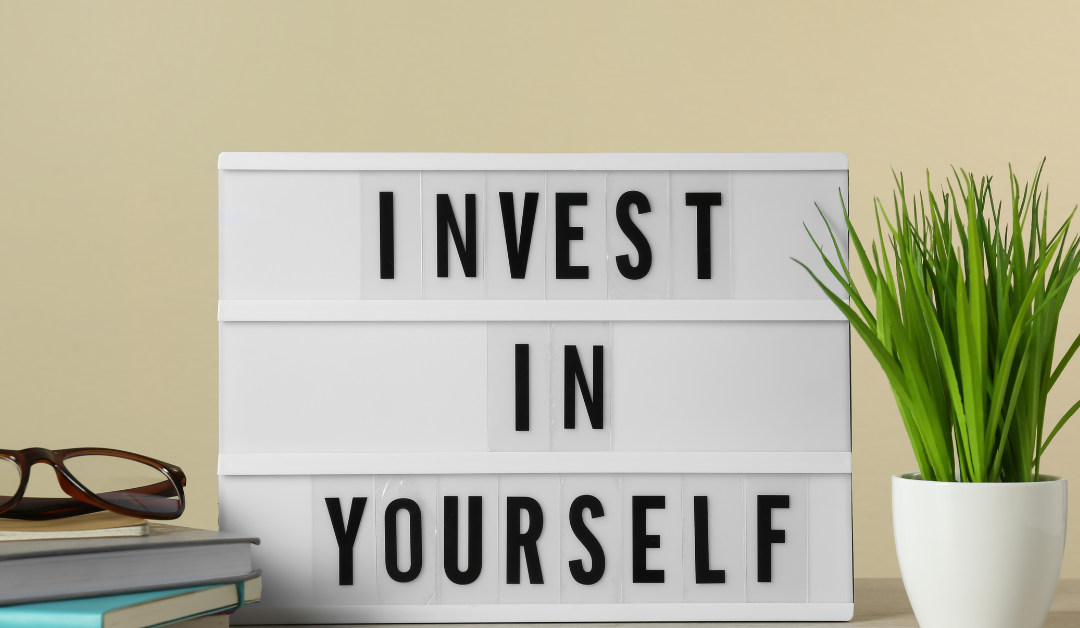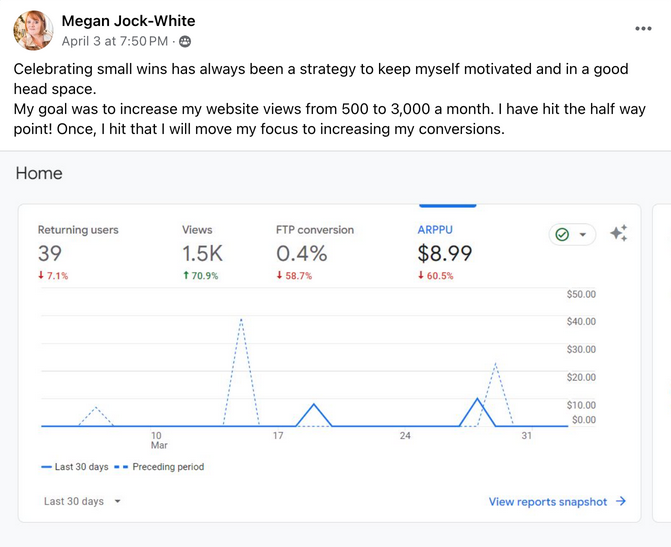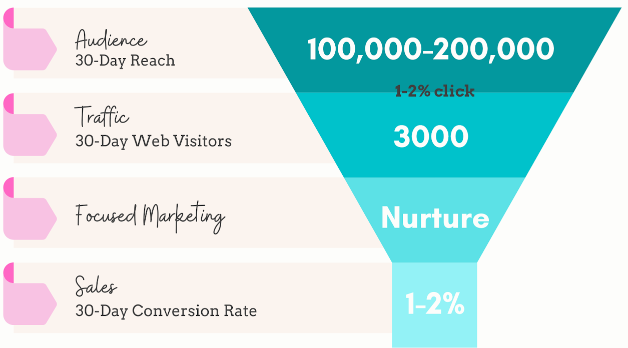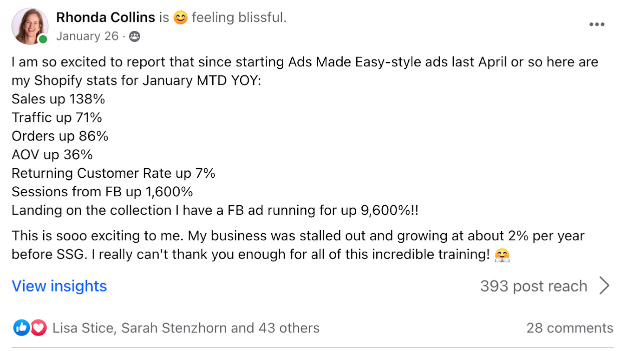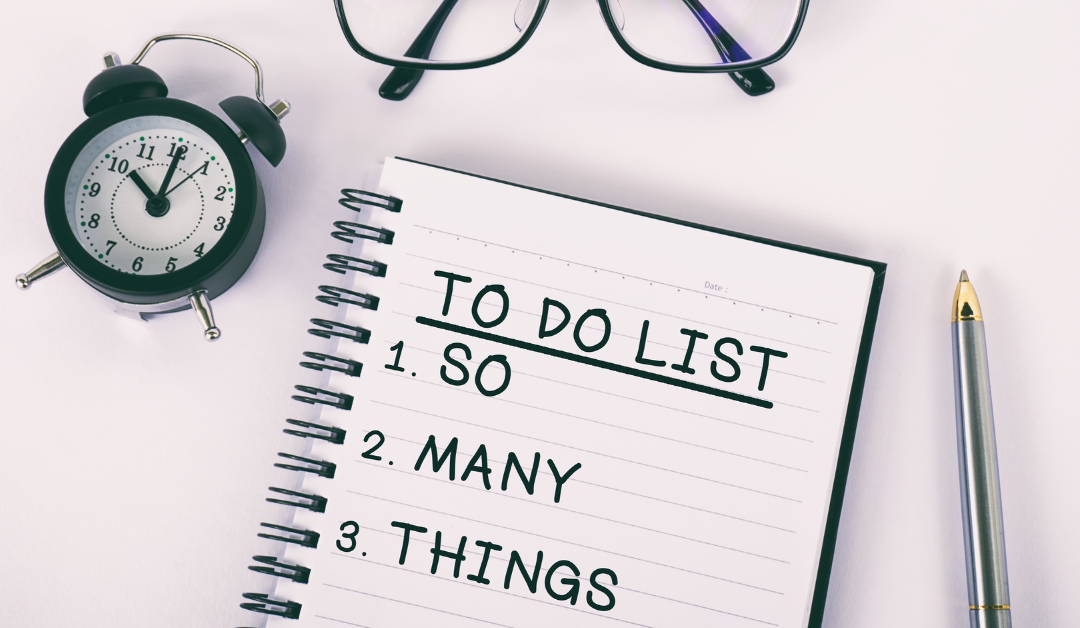No time to listen now? We'll send it to your inbox. No time to listen now? We'll send it to your inbox. or scroll down to get the highlightsI want to introduce you to Sarah Stenzhorn, who is one of the most steady,...

The Formula For An Easy Collaboration You Can Do This Month, Episode 215
No time to listen now? We'll send it to your inbox.
No time to listen now? We'll send it to your inbox.
or scroll down to get the highlights

Joining Forces: The Magic of Brand Collaboration
If you’ve been around The Social Sales Girls long, you know that we’re all about traffic. Driving new eyeballs to our websites and converting them to customers. In the Inner Circle our students learn all about how to identify their ideal audience and how to leverage social media, SEO strategies, and paid ads to bring those people in.
But what if I told you there’s a SHORTCUT?
A way to reach your perfect audience, without spending a dime? We call it “collaboration” and our Member Success Coach Tina Bar-On is our resident expert on this strategy that will introduce your brand to folks who might never have stumbled upon it otherwise, boost your site traffic and, grow your email list with engaged, potential customers.
Back in episode 120 Tina told us about her year of monthly collaborations. Initially, she wasn’t blown away by the results—some collaborations seemed to fizzle out. But when she looked back and really analyzed the data, the outcome was impressive. From all those collaborations, Tina ended up growing her email list by thousands. What’s more, these weren’t just any subscribers; they had a phenomenal 5% conversion rate, with several making multiple purchases. This was a prime audience that really resonated with the ethos of shopping small and valued her brand’s unique qualities.
The big takeaway from Tina’s experience? Even if in the moment a collaboration doesn’t feel like a win, the cumulative effect can be significant.
How Collaborations Can Multiply Your Sales Opportunities
A brand collaboration is basically teaming up with another business to help each other reach more people and grow. It’s about pooling your resources—like your audiences and your marketing platforms—to give each other a boost. You could share each other’s social media posts, promote each other’s products, or even team up for a joint giveaway.
The idea is to introduce your brand to folks who trust and buy from your collaboration partner, leveraging their credibility to gain new followers or customers. And here’s why I think every single online store owner should be embracing collaboration: you’re not shelling out big bucks for ads, you’re using what you both already have to reach a wider audience. It’s like getting a friend to vouch for you, making new potential customers feel more at ease checking you out since someone they already trust thinks you’re great.
Blueprint for Success: Crafting Your Collaboration Strategy Step-by-Step
Here’s how Tina likes to roll out a collab. She starts with a couple of teaser posts on Facebook, her go-to platform. She’ll drop hints like, “Hey, something cool’ss on the way!” and maybe show off a pic of a favorite product from her collab partner’s collection, or their logo to stir up some interest.
Next, she dives into a full week of sharing their products and content. She might post their brand video, a cool discount code they’ve given just for her audience, and she’ll send out some emails to spread the word. But she keeps it to a limited time—no more than a week or a week and a half. Then it’s back to business as usual, focusing on her own store.
What Tina loves about this method is that it’s quick and impactful. We know people need to hear a message a few times before they act on it, so packing it into a short burst helps drive that message home. It might seem like a lot to share their content for a whole week, but it’s effective.
Tina doesn’t make any new content; she uses what her partner already has. She’ll browse through their feed, pick things that align with what her audience likes, and share those. She might add a personal touch like, “Check out this amazing behind-the-scenes look at how this jewelry is made—I think you’ll find it as cool as I do!”
Since it’s Tina sharing, people who know and trust her taste get that extra nudge to check out what she’s recommending.
Keep it simple at the start. This makes everything less intimidating, and you’ll feel good knocking out those smaller wins, which amps you up to take on more.
What’s Stopping You? Common Barriers To Collaboration
Each month in the Inner Circle we have focused training in the classroom. And as part of that monthly theme, we host a live call with two of our coaches where students can ask questions, meet other members (and potential partners), and start to plan out their monthly activities. Our focus in April was collaborations, and on the live call, Tina was able to hear firsthand some of the barriers that store owners encounter when trying out this strategy.
Here’s how you can tackle some common hang-ups that make collaborating feel tougher than it is:
Hang-Up 1: Finding the right partner
Issue: Many store owners struggle to identify collaboration partners because they think they need to be selling something similar.
Solution: When you’re on the lookout for a collaboration partner, keep it straightforward and easy. Start by finding common ground. For example, if you’re independent store owners, that’s a great starting point because you’re likely attracting customers who aren’t just hunting for the cheapest deal—they’re not your typical big box store shoppers. They’re looking for something unique, something that big retailers don’t offer.
It’s also smart to partner with someone who serves the same geographic area as you do (i.e. find stores who ship to the same countries as you do). This way, your audiences are more likely to overlap, which can make logistics and marketing smoother.
Sometimes, people worry about potential partners being too similar to their own brand. But remember, each brand has its unique story. Tina sells artisan-made home decor and jewelry, and she’s successfully partnered with other jewelry shops, vintage bookstores, and even food stores. It works because both shops’ offerings connect with different facets of our customers’ interests.
In the end, it’s all about getting your brand in front of new eyes. Focus on shared interests and values rather than worrying too much about product overlap or audience size. Let the audience decide what resonates with them. Keep it simple, and you’ll find the right partners who can help you reach new customers and grow your business.
Hang-Up 2: Feeling Too Small to Play
Issue: If your social media following is small, you might think you’re not a good enough partner for a collab.
Solution: It’s all about quality, not quantity. Even if your follower count isn’t massive, every store owner struggles with what to post that will delight their audience. Can you create a post for them that has great photos? Can you tell a story that will get their customers laughing or excited about what you do? Do you have a stellar brand video they could share? That’s what your partner and their audience will value most, not the size of your audience.
Hang-Up 3: Fair Play Fears
Issue: Worrying about whether it’s a fair trade if your new collab buddy has a smaller list or fewer followers can stall you before you even start.
Solution: Think generosity over reciprocity. It’s not about matching up stats—it’s about mutual growth and reaching new customers. If it really bugs you, the store with the larger list can send only to a segment that’s equal to the size of your list. But remember, this is more about helping each other out than keeping score.
Hang-Up 4: Making Mountains Out of Molehills
Issue: Overthinking every little detail? That’s a surefire way to never get past the planning phase.
Solution: Start with something small and simple. Share each other’s posts, team up for a mini-event, or swap blog features. Get a feel for working together on little things before you dive into anything too deep.
“When you start out, just get it done, done is better than perfect. And success really just looks like, okay, I did it. My products in front of a whole new engaged audience. Somebody has shared my story on social media.”
Teamwork Makes The Dream Work: Measuring Success
When your collaboration has ended and you’re evaluating whether it was a hit or miss, here’s what you should consider:
- Did They Deliver? Check if your partner did everything they promised. It’s all about whether they stuck to the plan.
- Communication Check: Did you guys manage to have a post-collab chat? It’s good to talk things through—what went well, what didn’t, and learn from each other.
- Repeat Potential: Is this someone you’d be keen to team up with again? If you’re nodding yes, that’s a pretty good sign it went well.
- Engagement Metrics: Did your links get clicks? How about the emails they sent out—did those drive traffic your way? These numbers can tell you a lot about the practical impact of the collab.
Before you dive into more complex projects like giveaways, these are the basics to nail down. They give you a solid idea of whether you’re on the right track for future successful collaborations with this partner.
And if a collaboration doesn’t pan out, don’t stress over it. You always end up learning something valuable. Maybe you find out that the product or brand just didn’t click with your audience, or perhaps the strategy you chose wasn’t the best approach. Next time, you might try tossing in an extra email or maybe including a discount to see if that spices things up.
Sometimes, it turns out the person you chose to collaborate with isn’t the right fit, and that’s totally fine. Don’t just throw in the towel and decide collaborations aren’t for you. Keep pushing, keep trying. Here’s the thing: it’s a numbers game. It’s all about taking action and getting your brand in front of new eyes. The more you do, the better your chances of striking gold.
How Often Should You Collaborate?
Tina has a pretty big network, so she collaborates every two or three months. But if you’re just starting out, aiming for at least two collaborations a year is a solid beginning. And if you click with someone awesome, why not suggest another collaboration the following month?
Remember, it’s all about spotting opportunities. Whenever you meet another brand or store owner, think about whether they could be a good fit for a collaboration. Open up that conversation! And if they’re not already in the know—like not part of your usual circle—you might need to spell out what collaborating involves because sometimes people assume it’s going to be a huge deal.
Realistically, you could collaborate as often as once a month if you’re up for it and have partners lined up. It should definitely be part of your content strategy. After all, it’s about getting more eyes on your products without extra costs—purely a numbers game. So, don’t hold back. The more you do, the more your audience and traffic will grow!
How Do You Nurture Collab Leads?
Treat them just like you would any other contact, it’s as simple as that. Sometimes we overthink it and start creating all these complex rules—like if someone came through a popup, they need a certain type of message, or if they came through another route, they need a different approach.
But here’s the thing: these are all warm leads. They’ve shown interest; they’ve opted in. So just loop them into your regular communications. Send them the same engaging content and brand stories you send to everyone else on your list. Keep it straightforward and consistent. Whatever you think they should know about your brand, that’s what you should be sharing right from the start.
Get Over Yourself And Collaborate!
I know I’m a broken record about this strategy, but I really encourage you to just dive in and start. Don’t let anything hold you back. Find a partner without overthinking it. If you’re part of our Inner Circle, you’ve got a pool of potential partners right at your fingertips. Decide what you’re going to swap—maybe a story, a brand video, or something cool like “Tina’s favorites” or your own version of that. Settle on what you’ll exchange and when, and then just give it a shot.
Try it out and stick with it for a while. You’ll see how all those small steps add up over the year. And the best part? It’s not just about business growth. This is also about connection. E-commerce can be a lonely place, but through collaboration, you end up making friends, learning new things, maybe picking up a tip or two.
RELATED LINKS:
Organic Results That Will Shock You (Tina’s Year Of Collaboration)
https://thesocialsalesgirls.com/a-year-of-results-that-will-shock-you-episode-120/
The Story of A Profitable Makers Collaboration
https://thesocialsalesgirls.com/the-story-of-a-profitable-makers-collaboration-episode-30/
How To Use Collaborations To Get Traffic And Sales
https://thesocialsalesgirls.com/how-to-use-collaborations-to-get-traffic-and-sales-episode-18/
Think Out Of The Box For Organic Growth
How long will it take to reach your goals? Episode 203
We’re Getting Consistent Revenue Now. Episode 202
No time to listen now? We'll send it to your inbox. No time to listen now? We'll send it to your inbox. or scroll down to get the highlightsConsistent Revenue Now Last summer I spoke with Danielle Beauregard, owner of...
Make your business run without you. Here’s how. Episode 201
No time to listen now? We'll send it to your inbox. No time to listen now? We'll send it to your inbox. or scroll down to get the highlightsMake Sales In Your Jammies: Meet Sam Have you ever dreamed of making money...


